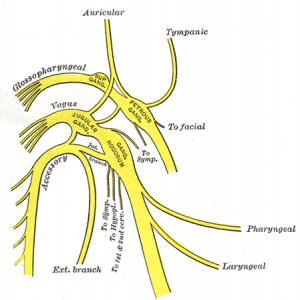NERVOUS REGULATION OF CIRCULATION
The means by which Nervous System controls the circulation are almost entirely through autonomic nervous system, i.e.
- Sympathetic nervous system.
- Parasympathetic nervous system.
- ROLE OF SYMPATHETIC
NERVOUS SYSTEM IN CONTROL OF CIRCULATION
It is the most important part of an autonomic nervous system for regulation of circulation.Sympathetic Nervous System acts through two Systems for control of circulation Which are:
- The sympathetic vasoconstrictor System.
- The sympathetic vasodilator system.
- Sympathetic
Vasoconstrictor System
The Sympathetic nerves carry mostly the vasoconstrictor fibers and only few vasodilator fibers. The vasoconstrictor system is Controlled by the vasomotor center in the brain.
Vasomotor Center
This center controls the sympathetic part of the nervous regulation of circulation.
LOCATION
Lies bilaterally in the reticular substance of medulla and lower 1/3rd of the pons.
PARTS
It consists of three parts i.e
1.Vasoconstrictor area or Area C-1
LOCATION
Bilaterally in the anterolateral portion of the upper pons.
FUNCTION
Excites the vasoconstrictor neurons of the sympathetic nervous system via secretion of norepinephrine.
2.Vasodilator area or Area A-1
LOCATION
Bilaterally in the anterolateral portions of the lower half of medulla.
FUNCTION
inhibits the vasoconstriction activity of C-1 area thereby causing vasodilation.
3. Sensory area or Area A-2
LOCATION
Bilaterally in tractus solitarius in posterolateral portions of the medulla and lower pons.
FUNCTION
Controls activity of both the vasoconstrictor and vasodilator areas.
SYMPATHETIC VASOCONSTRICTOR TONE
Continuous transmission of signals from vasomotor state to sympathetic vasoconstrictor nerve fibers is known as “sympathetic vasoconstrictor tone.”
VASOMOTOR TONE
Is a partial state of contraction in the blood vessels caused by the continual firing of the vasomotor area at a rate of about one and a half to two impulses/sec.
CONTROL OF HEART BY VASOMOTOR CENTER
- Lateral Portion of vasomotor center: Increases the heart rate and contractility,
- The medial portion of vasomotor center: Decreases the heart rate.
CONTROL OF VASOMOTOR AREA BY HIGHER NERVOUS CENTERS
Areas throughout the reticular substance of pons, mesencephalon and diencephalon can either excite or inhibit the vasomotor are a Posterolateral portion of the hypothalamus causes mainly-excitation of heart whereas anterior part can cause mild excitation or inhibition.
ROLE OF ADRENAL MEDULLA IN SYMPATHETIC VASOCONSTRICTOR SYSTEM
Sympathetic impulses are transmitted to the adrenal medulla at the same time that they are transmitted to all the blood vessels. These cause the medulla to secrete both epinephrine and norepinephrine into the circulation so as to cause vasoconstriction.
- Role of Sympathetic Vasodilator System
The main area of the brain controlling this center is the anterior hypothalamus. The role of sympathetic vasodilator system in control of circulation is doubtful, yet it is possible that at the onset of exercise, this System causes initial vasodilation in skeletal muscle to allow an advance increase in blood flow even before muscles requires increased nutrients.
VASOVAGAL SYNCOPE OR EMOTIONAL FAINTING
Fainting occurs as a result of intense emotional disturbances is known as “Vasovagal Syncope” or “emotional fainting.” Mechanism Intense emotional disturbance activates the vasodilator system and at the same time causes vagal cardio-inhibition. As a result arterial pressure falls, reducing the brain’s blood supply and patient loses consciousness,
- ROLE OF PARASYMPATHETIC NERVOUS SYSTEM IN CONTROL OF CIRCULATION
The parasympathetic nervous system plays a minor role in the regulation of circulation. Its only role is on heart functions by way of parasympathetic nerves via vagus nerve, i.e
- Marked decrease in heart rate.
- Slight reduction in contractility

![12 Cranial Nerves ALL Mnemonics 2023 [Includes Clean, Dirty, Harry Potter Mnemonic] 12 Cranial Nerves ALL Mnemonics 2023 [Includes Clean, Dirty, Harry Potter Mnemonic]](https://medicalstudyzone.com/wp-content/uploads/2022/10/12-Cranial-Nerves-ALL-Mnemonics-2023-Includes-Clean-Dirty-Harry-Potter-Mnemonic.jpg)







Leave a Reply